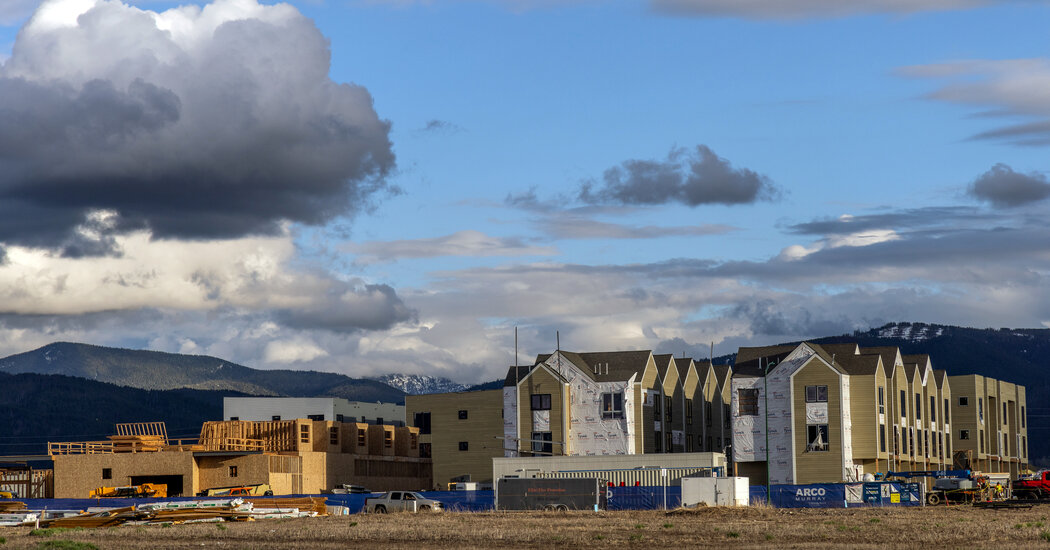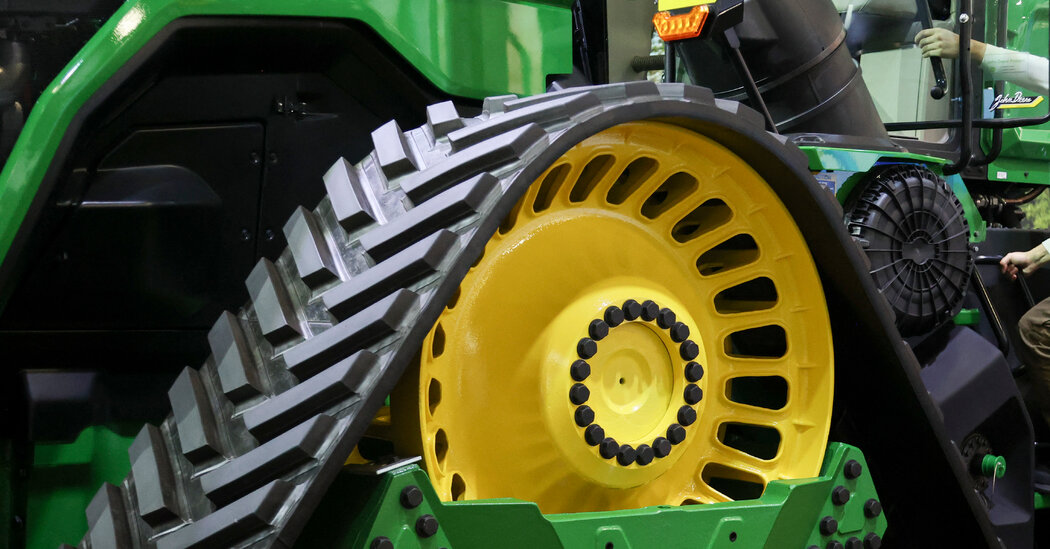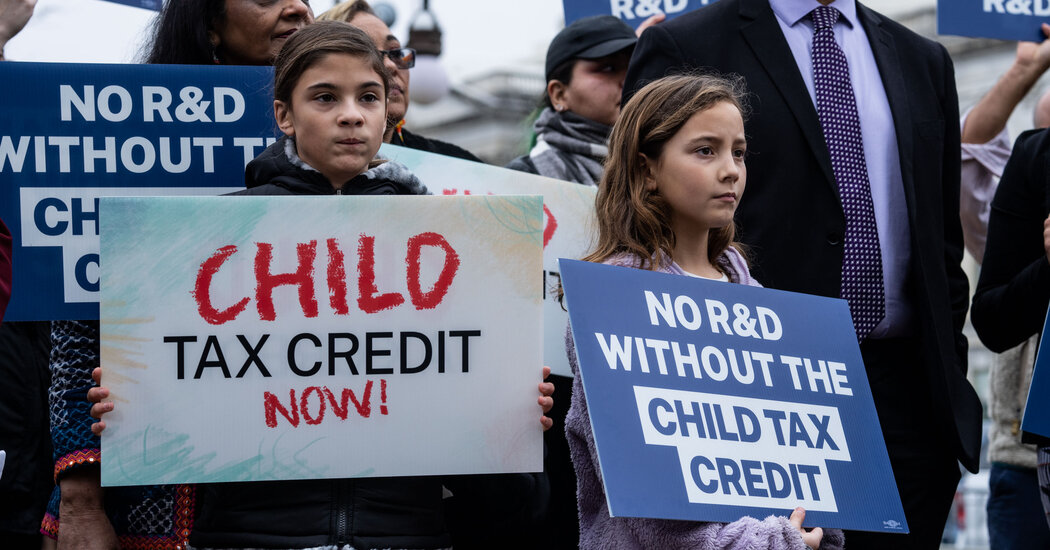Growing up in Bozeman, Mont., Dylan Heintz loved the picturesque views of the snow-capped mountains and the small-town charm. Things were cheap: His dad bought the family home for about $80,000.
These days, Bozeman feels less quaint. A steady stream of out-of-state transplants to Big Sky Country became a deluge during the pandemic, leading to soaring prices, a boom in luxury apartments that blot out the rustic scenery and a rash of higher-end businesses like Whole Foods. Drawn by Montana’s natural beauty and easy access to outdoor activities, the newcomers have created an affordability crisis and a local backlash that are transforming the state’s economy and politics.
“I love this place, but it’s just a tough place to live in,” said Mr. Heintz, 28, an auto body repairman. Rent has doubled in his trailer court, and he and his wife cannot afford to buy a home in town, leaving them considering a move to Florida. “There are a lot of out-of-staters that have some money, and they’re willing to pay above asking price. That definitely hurts people.”
The fresh population of wealthier residents — often retirees, technology workers able to do their jobs remotely and other big-city transplants — is one of the largest question marks hanging over Montana’s crucial race for Senate. As Jon Tester, the Democratic incumbent, looks to fend off Tim Sheehy, a businessman and retired Navy SEAL who is expected to capture the Republican nomination, tensions over the exploding growth will be a top issue in November.
And how the new Montanans vote could prove decisive.
On the surface, their presence might seem to benefit the embattled Mr. Tester, because a sizable chunk of them — 35 percent of arrivals in 2022 — hail from left-leaning states like California, Colorado, Oregon and Washington, according to census data analyzed by the real estate firm CBRE. Some political experts, though, believe the arrivals could tilt more to the right, noting a broader phenomenon in which conservatives have left their home states in part because of what they see as liberal overreach.
“Especially during the pandemic, there was movement from people out of more blue areas looking for a different, kind of more Republican, way of life,” said Dr. Jessi Bennion, a professor of political science at Montana State University. “My best guess is that a lot of the people moving to the state are those kinds of transplants.”
Montana does not have party registration, so the leanings of these voters remain in dispute.
“It’s a puzzle,” Dr. Bennion said. “This next election is going to show us a lot about the ways those voters approach politics.”
Though the flood of transplants has slowed in the last year, it could account for a significant portion of votes. From 2020 through 2023, about 52,000 more people arrived in Montana than left it, according to the state’s Department of Labor and Industry; Mr. Tester won re-election in 2018 by fewer than 18,000 votes. The state’s total population is just over 1.1 million.
Montana is traditionally conservative yet contrarian, voting solidly red at the presidential level but sending Mr. Tester back to the Senate repeatedly and choosing Democratic governors to lead the state from 2005 through 2020. Still, political strategists and experts say Montana has shifted to the right in recent years.
Don Kaltschmidt, the chair of the state Republican Party, suggested that the influx of new people was a big factor.
“We have a lot of what I call political refugees,” Mr. Kaltschmidt said. “There’s more conservatives that are moving out of the blue states.”
The National Republican Senatorial Committee, which is dedicated to electing Republicans and is backing Mr. Sheehy, said its analysis found that about 41 percent of new arrivals who had registered to vote in Montana since late 2018 were registered Republicans in their old states, compared with about 25 percent who were registered Democrats.
Democrats dispute that the new arrivals overwhelmingly belong to a particular party, and say their data is more mixed. They note that the Montana counties with the fastest growth are increasingly left-leaning, suggesting liberals are moving to those areas.
Mr. Tester has survived past elections by leaning on his bipartisan reputation and rural farming background to win over Republican voters. Working that charm on the new residents could be vital to staying in office.
Mr. Tester “absolutely has to get that small group of voters that are willing to split their ticket,” Dr. Bennion said.
Jennifer Glad and her husband moved to Bozeman from Redondo Beach, Calif., in late 2020, drawn by the easy skiing access and good public schools for their children — but also by a desire to get away from California and its leftward political shift.
“It has swung so far, and the policies and the taxes and everything else that go along with it make it hard to stomach,” said Ms. Glad, 47, a lawyer who declined to say how she planned to vote in the Senate race. “I’m tired of the crime, the homelessness.” By contrast, she said, Bozeman felt “pretty middle of the road.”
Other recent transplants lean left.
Greg Gemette had already been splitting his time between Palm Springs, Calif., and Bozeman when the pandemic shut down the country. He loved the proximity to the outdoors, and the area was less conservative than he had feared, so he and his husband decided to make it their permanent home.
“I thought to myself, ‘If the world’s ending, I might as well die here, because it’s pretty,’” said Mr. Gemette, 60, an apparel executive who plans to vote for Mr. Tester.
Regardless of their politics, the out-of-staters are having a tremendous impact on the local economy. The median home value in Montana reached about $425,000 late last year, a 75 percent jump from five years earlier, according to the state’s labor department, and the state added 18,450 jobs in 2022, the most in its history. Montana had the fourth-fastest wage growth in the country that year, with average annual pay of $54,525 — a $12,000 increase from five years earlier.
But residents say that increases in property taxes — which were up by a median of 21 percent last year — are squeezing their bank accounts, and that the cost of groceries, gasoline and other necessities has surged. Even as luxury homes sprout, locals say new affordable housing is scarce, though Gov. Greg Gianforte, a Republican, has championed a spate of new housing policies aimed at easing the shortage.
Nowhere has the affordability crisis been felt as acutely as in Bozeman, a city of about 56,000 not far from Yellowstone National Park and the upscale Big Sky skiing community. Bozeman, where the median home sells for about $770,000, has had so many out-of-state arrivals over the years that Montanans sometimes refer to it as “Boz Angeles.”
As high-end rentals in Bozeman spring up next to historic homes and new arrivals snap them up, a smattering of tents and RVs have begun to populate the outskirts of town: homeless residents priced out by rising rents.
Many longtime Montanans bristle at the newcomers, and bumper stickers proclaiming some version of “Montana Is Full” abound, occasionally with an expletive attached. Some locals blame the popular television show “Yellowstone” for romanticizing the Mountain West, luring people to the state.
Terry Cunningham, Bozeman’s mayor, a nonpartisan position, noted that many of the city’s more tenured residents were themselves transplants from several decades ago, so “to turn around and blame the newcomers is not fair sport.”
Still, he said, he spends much of his time trying to encourage developers to build affordable housing and navigating the community’s fraying nerves.
“That is the tension that, quite frankly, keeps me up at night,” Mr. Cunningham said.
Unsurprisingly, liberal and conservative Montanans disagree on who should be held accountable for these problems.
Republicans argue that President Biden is responsible for inflation that has driven up the cost of goods and led to a stubbornly expensive housing market. (Economists have said Mr. Biden’s pandemic-era stimulus checks indeed contributed to rising inflation. Former President Donald J. Trump also signed a round of stimulus checks.) And they note that Mr. Tester voted for several pieces of legislation that contributed to higher inflation, including the stimulus checks and the 2021 package to modernize the nation’s infrastructure.
Democrats — and many county governments — see Mr. Gianforte and the state’s Republican-controlled Legislature as particularly culpable. They argue that the state did not shield property owners from the blow of higher taxes when their home values were reappraised.
And they say Mr. Sheehy, a multimillionaire who grew up in Minnesota, epitomizes the wealthy out-of-staters, though he arrived a decade ago and made his fortune within the state.
“He’s trying to turn our state into a playground for rich transplants like him,” said Shelbi Dantic, Mr. Tester’s campaign manager.
Katie Martin, a spokeswoman for Mr. Sheehy’s campaign, said he and his wife, Carmen, “chose to make Montana home to raise their family and start a business because it was a place consistent with their values and the way they wanted to live.”
Mr. Cunningham, who said he had voted for both Democrats and Republicans, remained diplomatic on the Senate race.
He praised a donation Mr. Sheehy made to the local health care system and said he had worked to improve the community. And he said Mr. Tester had helped to increase funding for low-income housing tax credits.
“I see two people who love their state, love their community and are trying to do good things,” Mr. Cunningham said.



